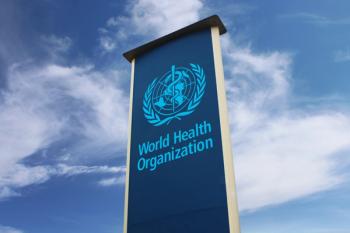
NSCLC Differs Between Rural, Urban Patients in Key Ways
Molecular differences may help explain geographic gaps in outcomes.
Rural patients with non–small cell
The study authors explained that people with NSCLC who live in rural areas—particularly those with early-stage cancers—have significantly worse overall survival than urban patients. But it was not always this way they noted; in the 1990s, rural patients had better outcomes.
“In this study, we hypothesized that there would be important differences in the mutational profile of a rural-only patient population when compared to currently available predominantly urban cohorts,” they wrote.
The authors recruited 34 people with resectable NSCLC and performed whole genome sequencing on the patients following surgery. They performed sequencing alignment, variant-calling, annotation, and tumor mutational burden (TMB) calculations, and then used the cBioportal and OncoKB systems to compare mutational frequency and actionable targets.
They found TP53 was the gene most commonly containing somatic variants.
“We found that TP53 mutations were more common in squamous cell cancer patients (63%, 7/11) than adenocarcinoma patients (25%, 5/20), consistent with previous studies, but both cohorts demonstrated a lower rate than the Cancer Genome Atlas [TCGA] squamous cell cancer (>90%) and TCGA lung adenocarcinoma subsets,” they wrote.
The authors further found a median number of somatic variants among the cohort of 188 (range, 11-1056) and a median TMB of 3.30 (range, 0.33-18.56). Those data were also similar to that of the TCGA, they said.
“However, the patient synopses of other important mutations associated with NSCLC were seen at much lower rates, including KRAS and EGFR, when compared to studies of primarily nonrural populations,” they wrote.
The authors said they did not find mutations in the BRAF, MET, ROS, or PTEN genes, but found much higher rates of mutation in the HOXA3 and SSPO genes.
“Together, this data demonstrate that our patient group is similar to larger national studies,” they said. “However, there are important differences supporting the inclusion of geographic diversity in these types of studies.”
The authors said recent studies have found that mutations in both HOXA3 and SSPO might be clinically meaningful.
Overall, the authors said they found potentially actionable mutations in 14% of the people enrolled in their study, a lower rate than that of previously published studies of metastatic patients, and they concluded that their study identified sufficient significant molecular differences in rural patients.
“This suggests the feasibility and potential of NGS-based precision-medicine approaches in rural NSCLC patients,” they wrote.
Reference
Mitchem J, Miller A, Manjunath Y et al. Somatic mutation variant analysis in rural, resectable non‐small cell lung carcinoma patients. Cancer Genet. 2022;268-269:75-82. doi:10.1016/j.cancergen.2022.09.008
Newsletter
Stay ahead of policy, cost, and value—subscribe to AJMC for expert insights at the intersection of clinical care and health economics.













































